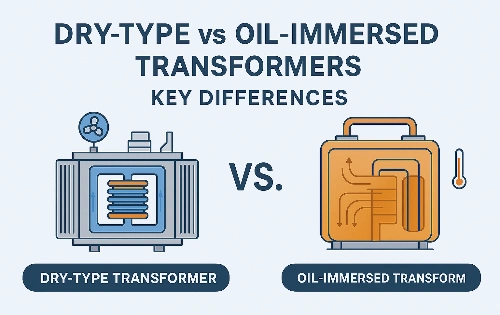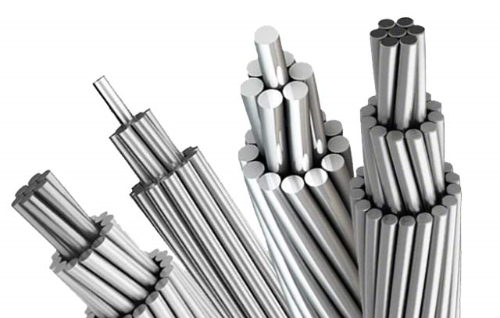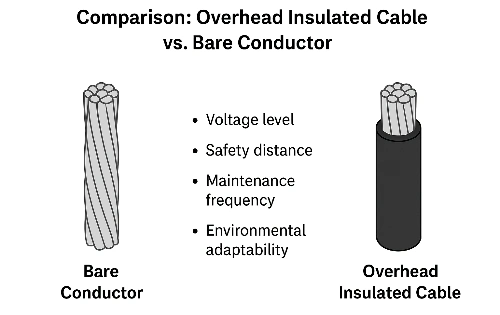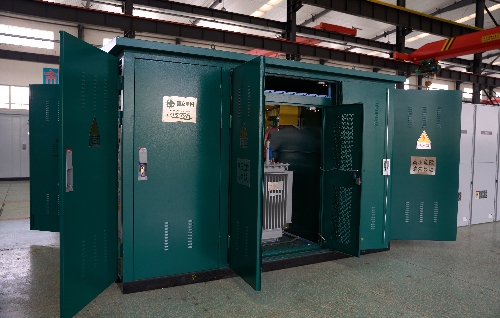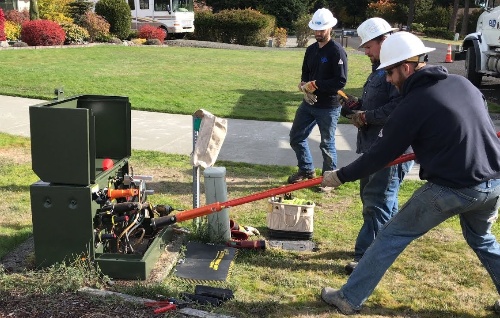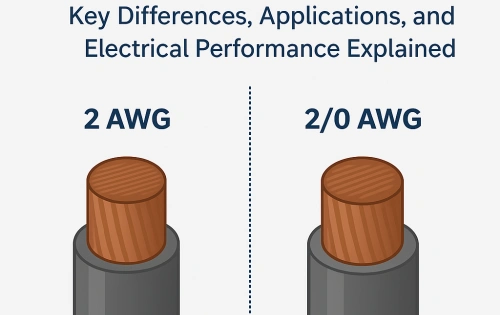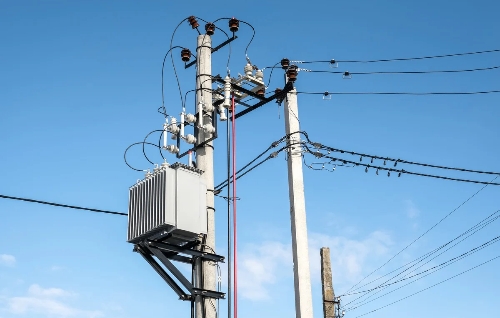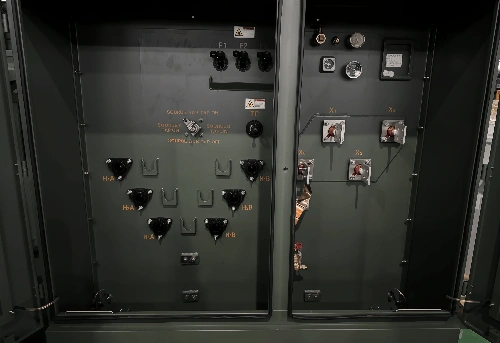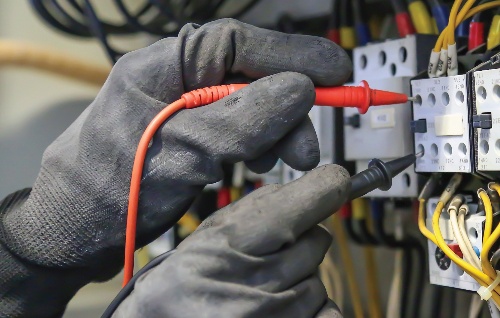How to Maintain a Safe Distance from the Substation? Guarding Your Family’s Electrical Safety
Substations, as indispensable hubs within the vast network of power transmission and distribution, silently fuel our modern lives with a constant supply of energy. Yet, these seemingly placid “hearts of electricity” conceal immense power and potential dangers. For the general public, understanding how to maintain a safe distance from the substation is paramount to safeguarding life and property. This article will delve into the safety risks associated with substations and provide practical, essential guidelines to keep you and your loved ones safe.
Understanding Substations: Why Are They Dangerous?
The primary function of a substation is to transform voltage, either stepping down the high voltage electricity from power plants for distribution to cities and towns, or stepping it up for long-distance transmission. This means that substations handle and transmit extremely high voltage currents. The dangers posed by this high voltage electricity are multifaceted and often imperceptible to the naked eye:
- Electrocution Risk: This is the most direct and lethal hazard. Even without direct contact with electrical equipment, proximity to high voltage lines or equipment can lead to electrocution due to arc flash, step potential, or touch potential.
- Arc Flash and Explosion: The complex electrical equipment within a substation can, in the event of a fault or short circuit, generate intense electrical arcs, leading to explosions and fires.
- Strong Electromagnetic Fields (EMF): While the long-term health effects are still a subject of ongoing research, prolonged exposure to strong electromagnetic fields might have adverse effects on the human body.
- Noise Pollution: Transformers and other equipment generate a continuous humming noise during operation, which can be disruptive to nearby residents.
Identifying the Danger Signs: A Substation’s “Warning Signals”
When encountering an unfamiliar area in the wild or near residential zones, how can you determine if it’s a substation and take preventative measures? Here are some clear identifying signals:
- Substation Fencing: This is the most obvious physical security barrier. All legitimate substations are typically enclosed by robust substation fencing (often metal mesh or brick walls). This substation fencing is usually adorned with clear warning signs such as “DANGER! HIGH VOLTAGE!” and “KEEP OUT!” The very presence of substation fencing is the strongest warning sign itself.
- Power Lines Entering a Substation: A crucial characteristic of a substation is the presence of multiple thick overhead power lines that connect to or diverge from it. These power lines often stretch from a distance, converging at or fanning out from the substation. These power lines entering a substation are the arteries carrying high voltage current. Even if they are high above the ground, never engage in activities like flying kites or drones directly beneath them.
- Electrical Equipment: Even through the substation fencing, you can typically see various large pieces of electrical equipment standing tall within the substation, such as transformers (often large metal boxes), circuit breakers, disconnect switches, lightning arresters, and capacitors. These pieces of electrical equipment have complex forms, often supported by ceramic or glass insulators, and are the central processing points for high voltage electricity.
- Noise and Odor: Sometimes, you can hear a continuous humming sound emanating from the substation, which is normal for operating transformers. In humid weather or during equipment malfunctions, you might even detect a faint ozone smell, which is a sign of high voltage discharge.
- Warning Placards: Besides the signs on the substation fencing, the surrounding area might also feature more detailed electrical safety warning signs.
How to Maintain a Safe Distance from the Substation: Practical Guidelines
Now that you understand the dangers and how to identify them, what specific actions should you take to ensure safety?
- Respect Substation Fencing:
- Never Climb or Breach:Substation fencing is the primary line of defense established by utility companies to protect public safety. Under no circumstances should you attempt to climb, damage, or breach substation fencing. Even if the fence appears to have a gap, never enter.
- Maintain External Distance: Even when standing outside the fence, remain vigilant. Electrical equipment can become energized due to faults or lightning strikes, potentially causing an arc flash. It is generally recommended to maintain a minimum safe distance of at least 10 meters (approximately 33 feet) from the substation fencing to guard against potential step voltage risks.
- Educate Children: Children are curious about the unknown but often do not understand the dangers of high voltage electricity. It is crucial to educate children that the area inside substation fencing is strictly off-limits. Any toys or items dropped inside the fence should not be retrieved independently; an adult or the power company should be immediately informed.
- Stay Clear of Power Lines Entering a Substation:
- Overhead Work Restrictions: When performing overhead work (e.g., crane operations, construction of tall structures, flying kites or drones, agricultural harvesting) near a substation, always stay clear of all power lines entering a substation. Any object coming into contact with high voltage lines can lead to severe electrocution.
- Avoid Activities Beneath Lines: Do not build homes, recreational facilities, or set up frequently used areas directly beneath high voltagepower lines.
- Downed Lines: If you discover a fallen or broken power line, regardless of whether it’s connected to a substation, immediately move at least 20 meters (approximately 66 feet) away and call your local electricity utility company to report it.
- Beware of All Electrical Equipment:
- Do Not Touch or Throw Objects: All electrical equipment inside a substation is energized, even if it appears static. It is strictly forbidden to throw stones, slingshots, or any other objects into the substation, as this can damage equipment, cause accidents, and even result in injury or death.
- Report Abnormalities: If you notice any unusual conditions within the substation, such as smoke, sparks, abnormal sounds, or signs of damaged electrical equipment, immediately move away and report it to the utility company or emergency services. Do not attempt to handle it yourself.
- Extra Vigilance During Adverse Weather:
- Thunderstorms: Lightning strikes can damage electrical equipment and cause power lines to break or fall. During thunderstorms, try to avoid being near substations and power lines.
- High Winds: Strong winds can cause trees or other objects to fall, potentially striking power lines and creating a dangerous situation.
Emergency Situations and Response
If, unfortunately, you encounter someone who has been electrocuted near a substation, remember these critical points:
- NEVER Directly Touch the Person! The electricity may still be conducting through their body, and direct contact will lead to your own electrocution.
- Immediately Call Emergency Services (e.g., 911 or your local equivalent) and the Utility Company’s Emergency Line (e.g., 98898 or your local power outage number), providing detailed information about the location and situation.
- Before professional help arrives, try to set up warnings from a safe distance to prevent others from approaching the scene.
Conclusion
Substations are the bedrock of our society’s smooth operation, yet the high voltage electricity and complex electrical equipment they contain signify inherent dangers that cannot be ignored. By understanding the critical role of substation fencing, recognizing power lines entering a substation and the internal electrical equipment, and always maintaining a respectful awareness of high voltage, we can effectively mitigate potential risks.
Electrical safety is no trivial matter. A little extra vigilance can prevent significant danger. Let us collectively strive to disseminate electrical safety knowledge and ensure the safety of ourselves and our surroundings. Stay safe and enjoy the convenience that electricity brings to our lives!

